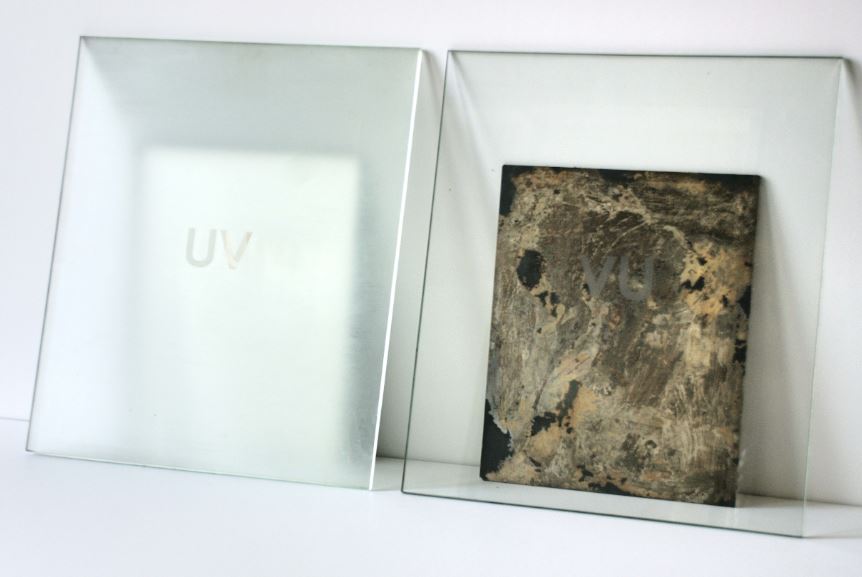By Andrew Hamlin
NORTHWEST ASIAN WEEKLY

Archival inkjet print (Courtesy of Carrie Yamaoka)
Four views of a disco ball, stacked vertically. The ball itself has all the mirrored facets necessary to throw rainbow points of light around a room, but the photos are black and white, and the ball itself looks flattened, as if stepped on by a giant. And the four photos sit in various states of decay, and disrepair. This party, they comment silently, left the building long ago. No more revelry, no more motion. Only decay.
Over the course of her first-ever solo museum, Carrie Yamaoka examines decay, disrepair, and entropy, over various contexts and through various philosophies. Of course, she sometimes induces the wear and tear herself, to save time of course, but also to study the line between the power of one’s own hand, and what nature chooses to work.

Reflective mylar and mixed media on wood (Courtesy of Carrie Yamaoka)
Sometimes the appearance of decay makes for a deliberate strategy of concealment. For the “Banned” series (1990-91), Yamaoka took pages from various books banned in the United States, and used various strategies, including highlighting and erasure, to accentuate certain passages. The viewer can contemplate the passages, both words and the appearance of the words. But it’s also possible, through a viewer’s own devices, to Google the passages to learn how they originally read. To add, or not to add, a response to the artist’s choices.
The frequent use of reflective surfaces also serves to insert the viewer into the artwork.
Yamaoka likens this effect to “a film plane where the shutter is always open.” The viewer observes the self, the background of the gallery, perhaps others passing by in the background. Perhaps others stopping to look at the same piece. And the given piece’s position in the gallery matters, too, since several pieces reflect each other.

Etched glass and mirrors (Courtesy of Carrie Yamaoka)
This ultimately makes each exhibition site-specific. The placing of pieces to reflect, and the number and the nature of the pieces, are never quite the same from place to place.
Yamaoka sums up this cumulative effect: “Never still for long, continually in motion, where the light falls, never the same way, I am caught in the process of becoming, and in the midst of disintegrating.”
She uses resin, mylar, and other substances, sometimes to render photographic effects without a camera. Some pieces stick to the wall in a finished state, others are in a state of flux, like ordinary window glass, which is technically an amorphous solid, with a rate of motion far too slow for the human eye to detect. Like glass, these Yamaoka pieces move, but they move very slowly, so we’d have to come back considerably later to notice any change.
One of the large mylar sheets shook, vibrating gently in the Henry Art Gallery’s air-conditioning. I watched for some time, unable to decide whether that was intentional.
But Yamaoka, who embraces chance and transformation as crucial aspects of her work, probably wouldn’t worry much about such distinctions. Her methods can seem fanciful, but they’re grounded always, however round-aboutly, in the weight of the world.
For “Archipelagoes” (1991-94), she grounded each segment in a name, and each name referred to a prison, an internment camp, or some other type of place where people aren’t free to leave. And she’s updated that series for Seattle. Because we’re not running out of such names, such places. I wonder how long she’ll keep updating that direction.
“Carrie Yamaoka: recto/verso” plays through Nov. 3 at the Henry Art Gallery on the University of Washington campus. For prices and other information, visit
henryart.org/exhibitions/carrie-yamaoka-recto-verso.
Andrew can be reached at info@nwasianweekly.com.



